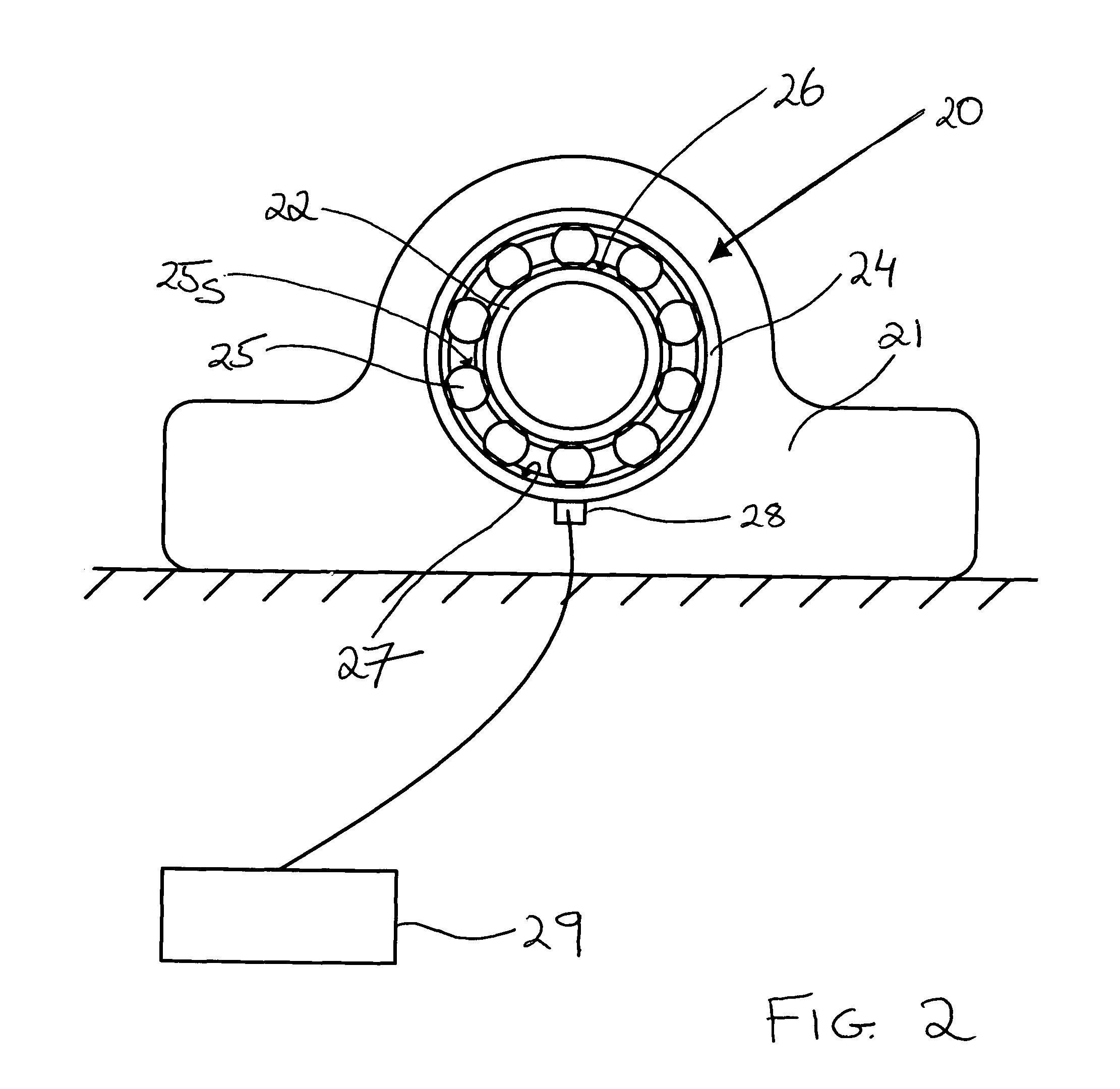Lubrication condition monitoring
a technology of lubrication condition and monitoring method, which is applied in the direction of vibration measurement in solids, mechanical instruments, instruments, etc., can solve the problems of affecting the operation of the bearing, the dielectric constant of the oil changes, and the bearing loses its ability to effectively separate the rolling contact surface, etc., to achieve easy change and monitoring of the lubrication condition, and the operation conditions of the bearing remain essentially constant. , the effect of increasing the friction loss
- Summary
- Abstract
- Description
- Claims
- Application Information
AI Technical Summary
Benefits of technology
Problems solved by technology
Method used
Image
Examples
Embodiment Construction
[0041]The embodiments of the invention with further developments described in the following are to be regarded only as examples and are in no way to limit the scope of the protection provided by the patent claims.
[0042]In the inventive method described herein, Acoustic Emission (AE) signals are measured. A commonly accepted definition for AE is transient elastic waves within a material due to localized stress release. It is associated with a range of phenomena which generate broadband activity from the transient release of stored elastic energy from localised sources. The elastic stress waves are generated in the ultrasonic frequency range and are structure borne. The waveform detected by a sensor will therefore be distorted by frequency-dependent attenuation such as dispersion, multi-path propagation and mode conversion. Significant acoustic emission is associated with material deformation, fracture or frictional processes, where the emitted signal has a surface or subsurface origi...
PUM
| Property | Measurement | Unit |
|---|---|---|
| frequency | aaaaa | aaaaa |
| frequency | aaaaa | aaaaa |
| cut-off frequencies | aaaaa | aaaaa |
Abstract
Description
Claims
Application Information
 Login to View More
Login to View More - R&D
- Intellectual Property
- Life Sciences
- Materials
- Tech Scout
- Unparalleled Data Quality
- Higher Quality Content
- 60% Fewer Hallucinations
Browse by: Latest US Patents, China's latest patents, Technical Efficacy Thesaurus, Application Domain, Technology Topic, Popular Technical Reports.
© 2025 PatSnap. All rights reserved.Legal|Privacy policy|Modern Slavery Act Transparency Statement|Sitemap|About US| Contact US: help@patsnap.com



